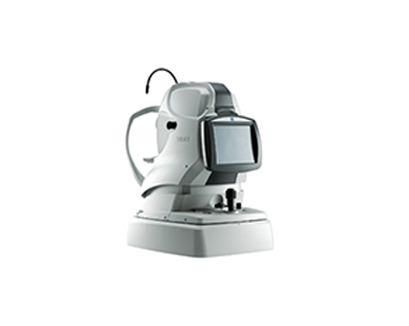Blog

Christmas comes early at Rawlings in Hedge End and Alton
Posted: Wednesday 19th December 2018
Our very latest investment in equipment has been the introduction of Ocular Coherence Tomographers (OCT). This allows for earlier detection of many eye conditions including glaucoma and macular degeneration. We’ve had a roll out period over the past two years of our OCT equipment, and we are delighted that this week we had the arrival of the final two, so now every branch of Rawlings Opticians can offer this fantastic service!
Here comes the science…
Ocular Coherence Tomography is a non-invasive imaging scan. It is the optical analogue of ultrasound: ultrasound uses sound waves to bounce of layers of tissue of varying reflectivity to build up an image; OCT works in a similar way. We can then see a cross-sectional image of the retina, thickness measurements are taken and maps formed, which are all important in diagnosing and monitoring eye diseases. The retina is the light sensitive membrane at the back of the eye that detects images and lets us see – a bit like the film in a camera. With OCT your optometrist can see each of the retina’s distinctive layers enabling earlier detection of many eye conditions.
We all love cake and an iced cake is a great way to think about how OCT works. The top layer of the retina is the icing and without OCT (such as with a microscope or looking into the eye with standard equipment or with retinal photography) we can only see the icing without being able to see inside the cake. Is it chocolate or vanilla? Are the layers all even? Is there anything hiding in the layers of that cake? Without looking inside the cake, only looking at the icing, you just don’t know. Luckily we don’t need to cut into the cake/eye to find out what is going on in the layers under the surface of the retina as the OCT simply shows us on the screen.
What happens during an OCT appointment?
During an OCT scan you will sit in front of the OCT equipment and rest your head on a support to keep it as still as possible. The camera will then scan your eye, without touching it. You will simply see a few red lines moving around and you will be asked to looks at a green or white dot. There is one flash from the machine for each eye in addition to the red lines that you will see. Scanning takes about 5 – 10 minutes in total – but most of this time is getting you positioned correctly – the actual scan itself is just a couple of minutes. If you have an OCT scan immediately preceding your eye examination then the optometrist will be able to show you the fascinating images on the screen in the consulting room.
Why should you have an OCT scan?
OCT scans can identify many more conditions, in addition to glaucoma and macular degeneration (both wet and dry), conditions such as macular holes, macular pucker, macular oedema, central serous retinopathy, diabetic retinopathy & vitreous traction. For many conditions (and also for routine eye health checking), serial scans give us the most valuable information. If we can build up a number of images over time, it allows us to see if a condition is developing or changing. In addition in detecting disease, serial OCT scans carried out at each eye examination can also give reassurance that healthy eyes are continuing to be perfectly healthy!
Book your OCT appointment now.
If you are a member of our Rawlings Vision Plan you can include this extra service for a small top up fee at the time of your examination or simply add this service to your plan.
< Back




